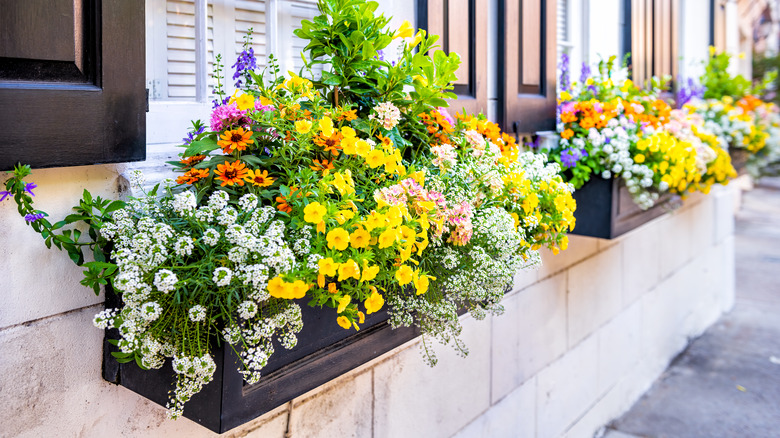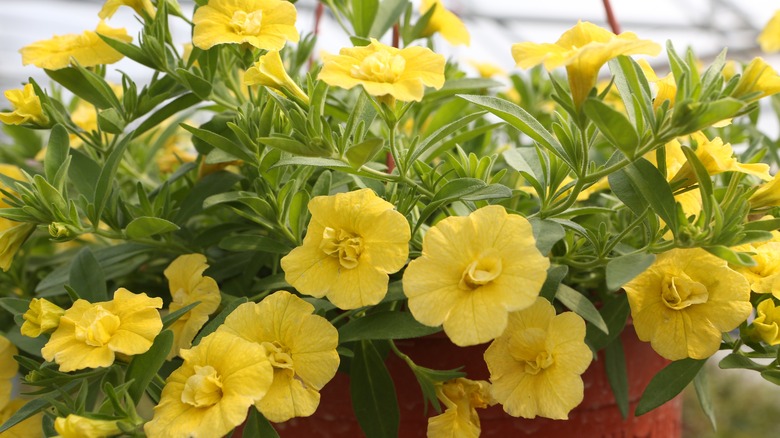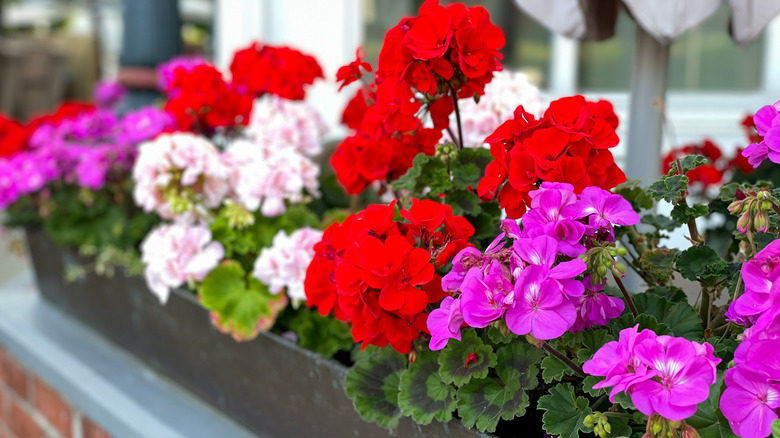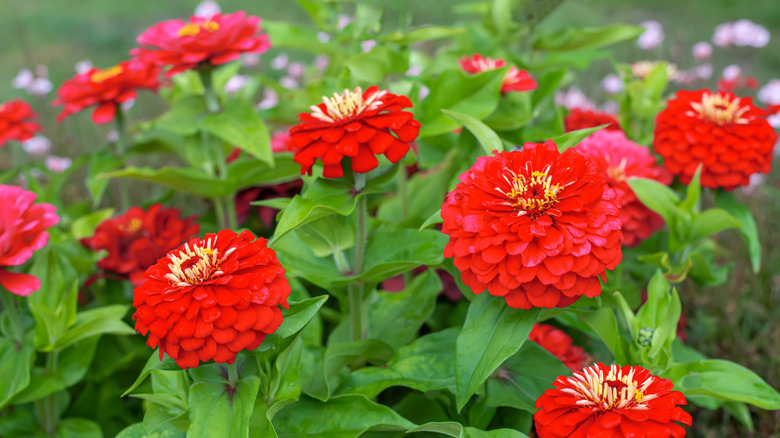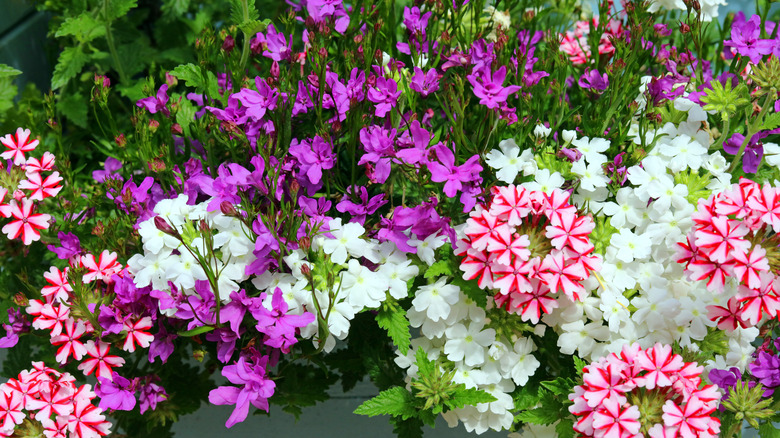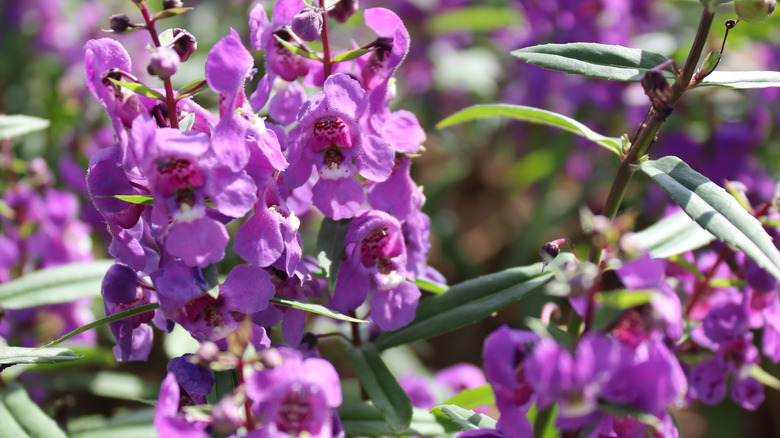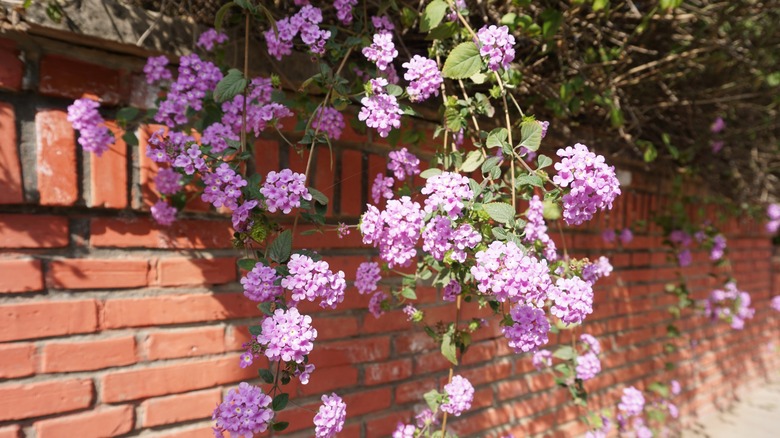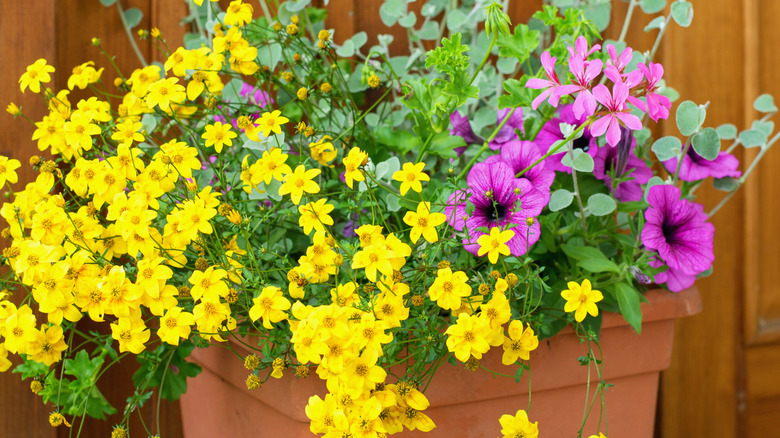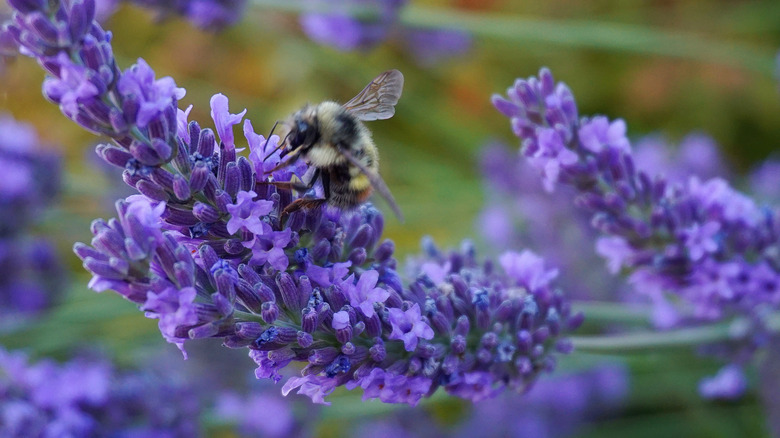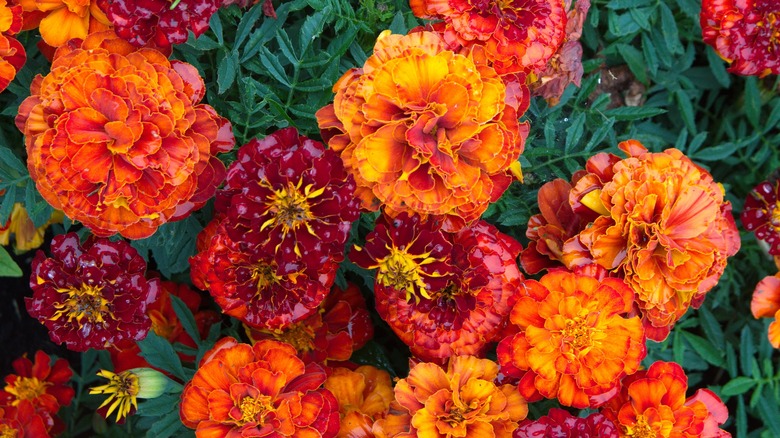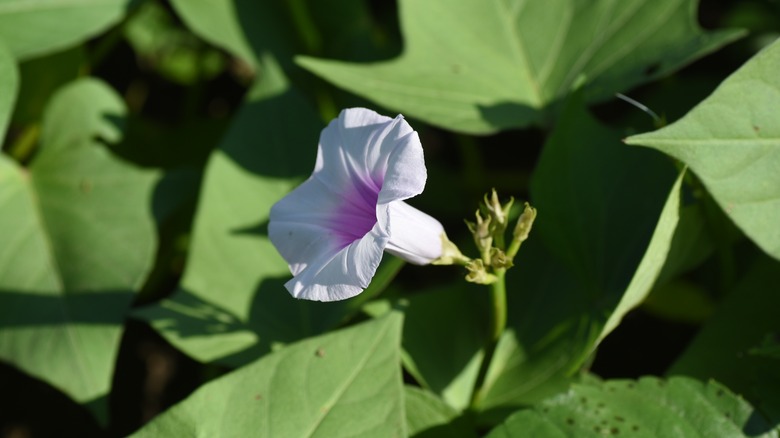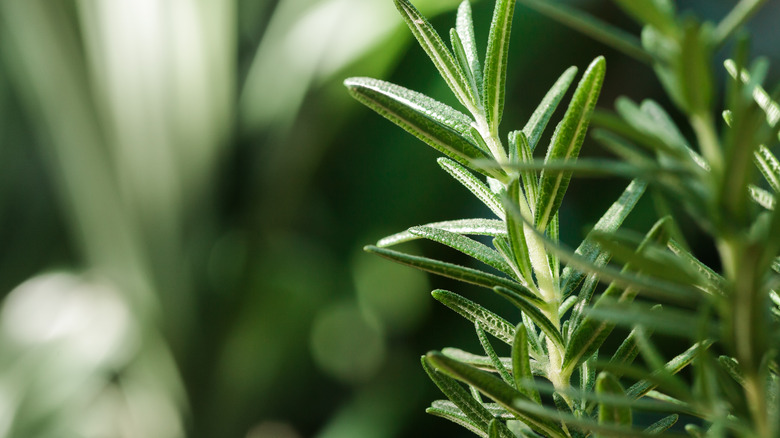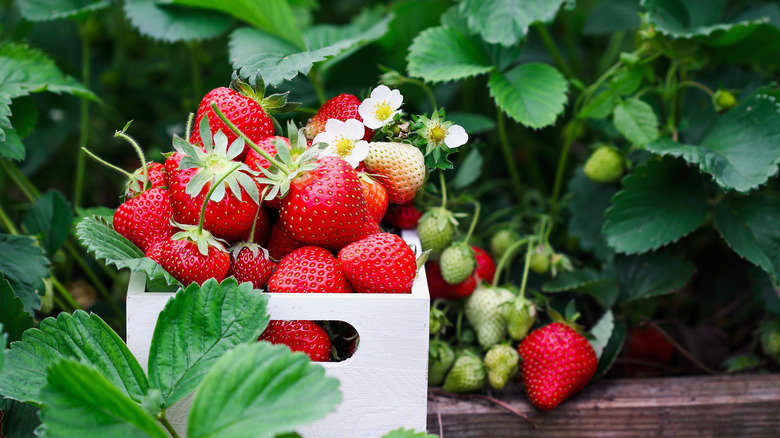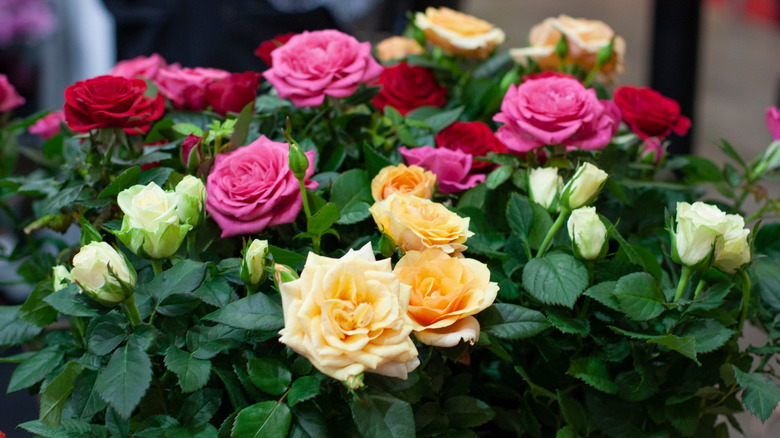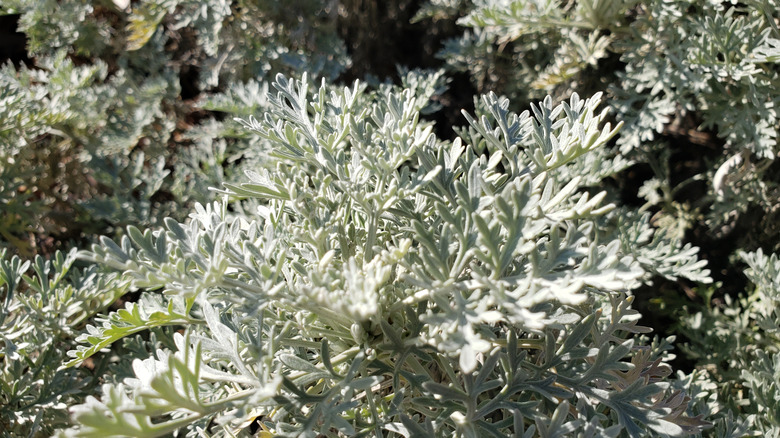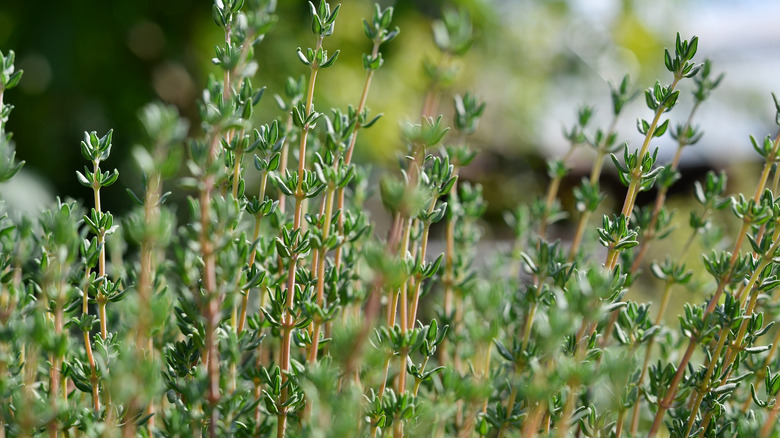15 Best Flowering Plants For Your Window Boxes
If you love flowers, having them in and around your home may have become second nature. Placing blooms where you can watch them grow and enjoy their spectacular colors brings joy, and tending them can be a great hobby. Starting a window box is the perfect way to have your favorite flowers in one place, and there are a variety of species you can choose from to really make it pop. While growing your own from seedlings is rewarding, for a window box you might want to visit a local greenhouse or nursery and choose from selections already in full bloom. This will allow you to pick the right colors, as well as view the different sizes and types available.
Building one of these gorgeous boxes can be an exciting endeavor, but you want to make sure everything will sit well together and grow next to one another in harmony. This is a good reason to pick from a specialty plant shop, too, as it allows you to learn a little about each species and what to expect. HGTV recommends considering location above all else, as many window box blooms need a lot of sunlight.
Once you choose your plant assortment, you can get them home and settle them into a window box you built or added to your window ledge. For help picking the best blooms for this project, the following species do well in such an environment.
Calibrachoa
Also called "million bells," this stunning flower comes in a variety of colors, so you can find one that suits your theme or window box collection best. According to Costa Farms, calibrachoa is an ideal species for planter boxes and thrive in full or partial sunlight. Ensure they stay watered and hydrated, but avoid too much moisture. Use your finger to check the top inch of soil is moist, pushing it in, to the second knuckle. If it feels dry, add water until you can see it exit the bottom of the box, only adding more when the soils dry again.
Geraniums
When planting a window box, you'll want to fill it with filler flowers, as well as taller species that sit at the back. Geraniums are ideal for this second option, as their blooms can get fairly big, especially the zonal varieties. According to the Old Farmer's Almanac, they need to have access to the sun for four to six hours every day, and only need water if the top inch of soil they sit in has gone dry. Don't overwater, otherwise, they can become corroded.
Zinnias
These bright blooms are ideal for filling up open spaces in your window box and don't require a lot of maintenance. They thrive in full sunlight and are known for their drought tolerance. Per the Old Farmer's Almanac, an advantage to growing zinnias is they can even survive in rich soil that boasts organic matter and make sure it can drain properly. They produce full flowers that come in a variety of colors, especially bright, jewel-toned hues.
Trailing verbena
Verbena flowers are another ideal addition to a window box, and their notable appearance is only one reason for this. They can be found in multiple shades and tones, and some feature "eyes" that make them pop even more. If you're looking for a plant that will spill over the edge of your window box, these trailing blooms are the perfect option, creating a dreamy hanging effect of brightly colored flora. They are known for being heat-tolerant, and Gardening Know How notes they benefit from deadheading (trimming off wilting petals) as well as full sun. Avoid soggy soil with these plants, too.
Salvias
Salvias are notable for their tall stature and stunning blooms, which tower over many other species. They are ideal for placing in the back of your window box and help to frame other smaller plants. They need full sunlight and medium amounts of water to flourish, especially when they are young. This means adding moisture to keep the soil rich, but not too much that the roots rot. According to Joy Us Garden, you should trim away spent flowers to help them thrive and grow to their full potential, which is around two-feet high.
Lantana
These tiny flowers are fantastic for filling up a planter box, making it look lush and thick. They can reach the same heights as salvias, but they also spread out and intertwine throughout neighboring blooms. This makes them ideal for window displays. Like their fellow box species, they require full sun to help them grow, but they need more water than some of the aforementioned plants. Gardening Know How suggests soaking lantanas once a week, but more if they stop growing or their soil dries out too quickly. If this happens, water them more to keep them moist.
Bidens
This adorable flower is similar in appearance to a daisy, making it an easy addition to your window box thanks to its easily blendable aesthetic. It looks nice with other flowers and adds a friendly demeanor to an already colorful spread. They need soil that is rich in nutrients, and sun exposure for around four hours a day, according to Plant Care Today. Make sure they have good drainage after watering but don't worry about deadheading them while they are in bloom. In winter they could suffer from cold conditions as they don't do well in temperatures that go below freezing.
Lavender
Recognized for the intoxicating smell these flowers emit, they also produce stunning blooms that come in a strange purple/gray color. Their tall stature is a good addition to your planters and window boxes, bringing a lovely scent as well as a textured aesthetic. American Meadows says to grow lavender plants in full sunlight, and use fertile soil that drains well when watered. This plant is known for being drought-tolerant, so once it matures, it doesn't require much moisture to thrive.
Marigold
Boasting single and double-petaled designs, marigolds are another fine selection for your window box. They bloom in warm colors like orange, red, gold, and yellow, making them a cheery addition. Clemson's Home & Garden Information Center suggests using loamy soil and placing them where it can access full sunlight. Their conditions should allow the soil to drain well so the roots can thrive, and these flowers should receive water once a week, either an inch or deeper depending on rain conditions in the area.
Sweet potato vine
To add some leafy greens in with your blooms, look for sweet potato vines at your local nursery, and place them in a position where they can get six hours of sunshine. These thick vines can trail over the edge of your window box, creating a fluid feel to the whole assortment. Garden Design recommends using potting soil that fits a variety of purposes, and keeping the plant moist but not soaked. They should be watered once a week, and pruned whenever they get too big or start to outgrow their containers.
Rosemary
Just like its window box counterparts, rosemary needs full sun exposure to grow to its full potential. Bonnie Plants recommends adding plant food that is water-soluble and using compost that has been aged to mix in with your soil. You'll want to keep them on a regular watering schedule, but wait until the soil has dried out before adding moisture. Rosemary is a great addition to a window box because you can snip off stems to use in drinks and cooking recipes.
Strawberry
Another delicious and fun option for your planter box is the strawberry plant. All of these plants rely on full sunlight to flourish, so these will do well among the others you've considered. There are several different species to choose from, and if you plan to eat the berries, you'll want to ensure they are free of disease before planting, according to SFGATE. They do well when the soil can properly drain, and only need water when the first inch of dirt feels dry unless your climate is particularly dry during their blooming season.
Miniature rose
Roses are one of the most popular flowers, and their blooms create a whimsical aesthetic that adds romance and color to any garden. Their care follows the same basic outline as their full-sized counterparts, with full sunlight being one requirement to keep them blooming. Potting soil and one inch of water every week will keep them happy, but always defer to your environment when it comes to moisture. Minnetonka Orchards also recommends pruning them regularly.
Artemisia
This leafy green looks enchanting mixed in with bright blooms, thanks to its grayish-green appearance. Artemisia is a species of the daisy family, but unlike their petalled cousins, they don't sprout blooms. They do well in brightly sunlit areas and can handle dry weather without succumbing to wilted foliage. Artemisia is easy to care for because once they have matured, they don't require regular watering unless your area is suffering from drought conditions. Fine Gardening suggests pruning them to a compact shape to help them grow.
Thyme
Having greenery to complement your florals is good for balance, and thyme is a fantastic fauna to implement in your window box. This plant comes from the Mediterranean originally, so it loves full sunlight and sandy soils. Bonnie Plants recommends pruning your stems regularly, but only in thirds to avoid over-cutting. You can add water-soluble nutrients that benefit the roots and surrounding soil, but don't overwater these leafy greens. Use them in your cooking for a nice garnish or herb addition once they are matured.
